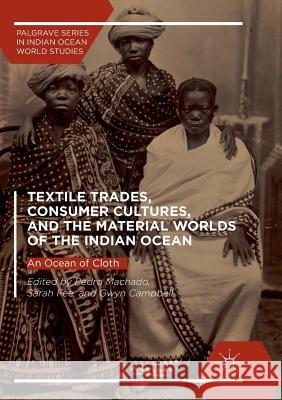Textile Trades, Consumer Cultures, and the Material Worlds of the Indian Ocean: An Ocean of Cloth » książka
topmenu
Textile Trades, Consumer Cultures, and the Material Worlds of the Indian Ocean: An Ocean of Cloth
ISBN-13: 9783319863634 / Angielski / Miękka / 2019 / 426 str.
Kategorie BISAC:
Wydawca:
Palgrave MacMillan
Seria wydawnicza:
Język:
Angielski
ISBN-13:
9783319863634
Rok wydania:
2019
Wydanie:
Softcover Repri
Ilość stron:
426
Waga:
0.54 kg
Wymiary:
21.01 x 14.81 x 2.34
Oprawa:
Miękka
Wolumenów:
01
Dodatkowe informacje:
Wydanie ilustrowane











